Flexural Behavior of Reinforced Concrete Beams under Instantaneous Loading: Effects of Recycled Ceramic as Cement and Aggregates Replacement
Abstract
:1. Introduction
2. Experimental Program
2.1. Material and Mix Proportions
2.2. Details of Beam Specimens
2.3. Experimental Setup of Beams for Testing
3. Results and Discussion
3.1. First Crack Load and Mode of Failure of Beams
3.2. Load-Deflection Behavior (Mid-Span Deflection) of Beams
3.3. Ultimate Flexural Capacity of Beams
3.4. Strain of Reinforcement Bars under Applied Load
3.5. Strain of Concrete under Applied Loads
3.6. Compression and Tension of Beams
3.7. Position of Neutral Axis in Beams
3.8. Distribution of Crack on Beams Span
4. Conclusions
- i.
- The strength performance of the reinforced concrete beam made of recycled ceramic waste and conventional concrete to some extent showed a similar trend under applied stress, wherein an equal number of cracks across the length of the beam was formed. All beams failed in flexure because of the longitudinal reinforcement bar and subsequent rupture of the concrete in the compression region.
- ii.
- The overall performance of the reinforced concrete beams containing 100% ceramic waste as fine and coarse aggregates revealed an acceptable performance compared to the control beam. It was affirmed that ceramic wastes could be efficiently used in the production of sustainable concrete.
- iii.
- A comparison of the ultimate experimental load of all beams with CC showed that the RA beam achieved up to 99% of the ultimate load of the CC beam. Additionally, the first crack loads were similar for both specimens (14 kN). The total number of cracks for the CC and RA beam was 16 and 14, respectively.
- iv.
- The RA beam containing ceramic wastes as fine and coarse aggregates showed a reduction in the beam deflection by 43% compared to the CC beam. The RC and RF beams attained a 24% and 28% reduction in the deflection, respectively.
- v.
- The experimental result of the flexural capacity of all beams was quite close to the CC beam, wherein the difference between the maximum and minimum flexural capacity was only 1.21 kNm. The flexural capacity of RC was only 6% lower than the CC, indicating the potential benefits of the ceramic wastes in replacing cement and aggregates in the normal concrete.
Author Contributions
Funding
Institutional Review Board Statement
Informed Consent Statement
Data Availability Statement
Acknowledgments
Conflicts of Interest
Abbreviations
| CC | Conventional concrete |
| RWC | Recycled wastes ceramic |
| RCBs | Reinforced concrete beams |
| RF | Recycled wastes ceramic as fine aggregates |
| RC | Recycled wastes ceramic as coarse aggregates |
| RA | Recycled wastes ceramic as fine and coarse aggregates |
| OPC | Ordinary Portland cement |
| LVDTs | linear variable displacement transducer |
| w/c | Water-cement ratio |
| w/b | Water to binder ratio |
References
- Awoyera, O.P.; Akinmusuru, J.O.; Ndambuki, J.M. Green concrete production with ceramic wastes and laterite. Constr. Build. Mater. 2016, 117, 29–36. [Google Scholar] [CrossRef]
- Mhaya, A.M.; Huseien, G.F.; Abidin, A.R.Z.; Ismail, M. Long-term mechanical and durable properties of waste tires rubber crumbs replaced GBFS modified concretes. Constr. Build. Mater. 2020, 256, 119505. [Google Scholar] [CrossRef]
- Huseien, G.F.; Sam, A.R.M.; Algaifi, H.A.; Alyousef, R. Development of a sustainable concrete incorporated with effective microorganism and fly Ash: Characteristics and modeling studies. Constr. Build. Mater. 2021, 285, 122899. [Google Scholar] [CrossRef]
- Mhaya, A.M.; Huseien, G.F.; Faridmehr, I.; Abidin, A.R.Z.; Alyousef, R.; Ismail, M. Evaluating mechanical properties and impact resistance of modified concrete containing ground Blast Furnace slag and discarded rubber tire crumbs. Constr. Build. Mater. 2021, 295, 123603. [Google Scholar] [CrossRef]
- Tošić, N.; Marinković, S.; Ignjatović, I. A database on flexural and shear strength of reinforced recycled aggregate concrete beams and comparison to Eurocode 2 predictions. Constr. Build. Mater. 2016, 127, 932–944. [Google Scholar] [CrossRef]
- Sato, R.; Maruyama, I.; Sogabe, T.; Sogo, M. Flexural Behavior of Reinforced Recycled Concrete Beams. J. Adv. Concr. Technol. 2007, 5, 43–61. [Google Scholar] [CrossRef]
- Lehner, P.; Horňáková, M. Effect of Amount of Fibre and Damage Level on Service Life of SFR Recycled Concrete in Aggressive Environment. Buildings 2021, 11, 489. [Google Scholar] [CrossRef]
- Algaifi, H.A.; Khan, M.I.; Shahidan, S.; Fares, G.; Abbas, Y.M.; Huseien, G.F.; Salami, B.A.; Alabduljabbar, H. Strength and Acid Resistance of Ceramic-Based Self-Compacting Alkali-Activated Concrete: Optimizing and Predicting Assessment. Materials 2021, 14, 6208. [Google Scholar] [CrossRef]
- Seara-Paz, S.; González-Fonteboa, B.; Martínez-Abella, F.; Carro-López, D. Long-term flexural performance of reinforced concrete beams with recycled coarse aggregates. Constr. Build. Mater. 2018, 176, 593–607. [Google Scholar] [CrossRef]
- Elçi, H. Utilisation of crushed floor and wall tile wastes as aggregate in concrete production. J. Clean. Prod. 2016, 112, 742–752. [Google Scholar] [CrossRef]
- Anderson, D.J.; Smith, S.; Au, F.T. Mechanical properties of concrete utilising waste ceramic as coarse aggregate. Constr. Build. Mater. 2016, 117, 20–28. [Google Scholar] [CrossRef]
- Shafigh, P.; Bin Mahmud, H.; Jumaat, M.Z.; Ahmmad, R.; Bahri, S. Structural lightweight aggregate concrete using two types of waste from the palm oil industry as aggregate. J. Clean. Prod. 2014, 80, 187–196. [Google Scholar] [CrossRef]
- Valdés, A.J.; Martínez, C.M.; Romero, M.I.G.; García, B.L.; Del Pozo, J.M.; Vegas, A.T. Re-use of construction and demolition residues and industrial wastes for the elaboration or recycled eco-efficient concretes. Span. J. Agric. Res. 2010, 8, 25. [Google Scholar] [CrossRef]
- Baeza, F.; Payá, J.; Galao, O.; Saval, J.; Garcés, P. Blending of industrial waste from different sources as partial substitution of Portland cement in pastes and mortars. Constr. Build. Mater. 2014, 66, 645–653. [Google Scholar] [CrossRef]
- Magbool, H.M. Utilisation of ceramic waste aggregate and its effect on Eco-friendly concrete: A review. J. Build. Eng. 2021, 47, 103815. [Google Scholar] [CrossRef]
- Zimbili, O.; Salim, W.; Ndambuki, M. A review on the usage of ceramic wastes in concrete production. Int. J. Civ. Environ. Struct. Constr. Archit. Eng. 2014, 8, 91–95. [Google Scholar]
- Samadi, M.; Huseien, G.F.; Mohammadhosseini, H.; Lee, H.S.; Lim, N.H.A.S.; Tahir, M.M.; Alyousef, R. Waste ceramic as low cost and eco-friendly materials in the production of sustainable mortars. J. Clean. Prod. 2020, 266, 121825. [Google Scholar] [CrossRef]
- Medina, C.; de Rojas, M.I.S.; Thomas, C.; Polanco, J.A.; Frías, M. Durability of recycled concrete made with recycled ceramic sanitary ware aggregate. Inter-indicator relationships. Constr. Build. Mater. 2016, 105, 480–486. [Google Scholar] [CrossRef]
- Ledesma, E.F.; Jiménez, J.R.; Ayuso, J.; Fernández, J.M.; de Brito, J. Maximum feasible use of recycled sand from construction and demolition waste for eco-mortar production—Part-I: Ceramic masonry waste. J. Clean. Prod. 2015, 87, 692–706. [Google Scholar] [CrossRef]
- Senthamarai, R.; Manoharan, P.D. Concrete with ceramic waste aggregate. Cem. Concr. Compos. 2005, 27, 910–913. [Google Scholar] [CrossRef]
- Huang, B.; Dong, Q.; Burdette, E.G. Laboratory evaluation of incorporating waste ceramic materials into Portland cement and asphaltic concrete. Constr. Build. Mater. 2009, 23, 3451–3456. [Google Scholar] [CrossRef]
- Senthamarai, R.; Manoharan, P.D.; Gobinath, D. Concrete made from ceramic industry waste: Durability properties. Constr. Build. Mater. 2011, 25, 2413–2419. [Google Scholar] [CrossRef]
- Huseien, G.F.; Sam, A.R.M.; Shah, K.W.; Mirza, J.; Tahir, M.M. Evaluation of alkali-activated mortars containing high volume waste ceramic powder and fly ash replacing GBFS. Constr. Build. Mater. 2019, 210, 78–92. [Google Scholar] [CrossRef]
- Samadi, M.; Hussin, M.W.; Lee, H.S.; Sam, A.R.M.; Ismail, M.; Lim, N.H.A.S.; Ariffin, N.F.; Khalid, N.H.A. Properties of mortar containing ceramic powder waste as cement replacement. J. Teknol. 2015, 77, 93–97. [Google Scholar] [CrossRef] [Green Version]
- Huseien, G.F.; Sam, A.R.M.; Mirza, J.; Tahir, M.M.; Asaad, M.A.; Ismail, M.; Shah, K.W. Waste ceramic powder incorporated alkali activated mortars exposed to elevated Temperatures: Performance evaluation. Constr. Build. Mater. 2018, 187, 307–317. [Google Scholar] [CrossRef]
- Fernandes, M.; Sousa, A.; Dias, A. Environmental Impacts and Emissions Trading-Ceramic Industry: A Case Study; Technological Centre of Ceramics and Glass, Portuguese Association of Ceramic industry: Coimbra, Portugal, 2004. (In Portuguese) [Google Scholar]
- Torgal, F.P.; Jalali, S. Reusing ceramic wastes in concrete. Constr. Build. Materials. 2011, 24, 832–838. [Google Scholar] [CrossRef]
- Limbachiya, M.; Meddah, M.S.; Ouchagour, Y. Use of recycled concrete aggregate in fly-ash concrete. Constr. Build. Mater. 2012, 27, 439–449. [Google Scholar] [CrossRef]
- Heidari, A.; Tavakoli, D. A study of the mechanical properties of ground ceramic powder concrete incorporating nano-SiO2 particles. Constr. Build. Mater. 2013, 38, 255–264. [Google Scholar] [CrossRef]
- Huseien, G.F.; Mirza, J.; Ismail, M.; Hussin, M.W.; Arrifin, M.A.M.; Hussein, A.A. The Effect of Sodium Hydroxide Molarity and Other Parameters on Water Absorption of Geopolymer Mortars. Indian J. Sci. Technol. 2016, 9, 1–9. [Google Scholar] [CrossRef]
- Huseien, G.F.; Mirza, J.; Ismail, M.; Ghoshal, S.; Ariffin, M.A.M. Effect of metakaolin replaced granulated blast furnace slag on fresh and early strength properties of geopolymer mortar. Ain Shams Eng. J. 2018, 9, 1557–1566. [Google Scholar] [CrossRef] [Green Version]
- Meyer, C. The greening of the concrete industry. Cem. Concr. Compos. 2009, 31, 601–605. [Google Scholar] [CrossRef]
- Naceri, A.; Hamina, M.C. Use of waste brick as a partial replacement of cement in mortar. Waste Manag. 2009, 29, 2378–2384. [Google Scholar] [CrossRef] [PubMed]
- Jiménez, J.R.; Ayuso, J.; López, M.; Fernández, J.M.; De Brito, J.M.C.L. Use of fine recycled aggregates from ceramic waste in masonry mortar manufacturing. Constr. Build. Mater. 2013, 40, 679–690. [Google Scholar] [CrossRef]
- Martín-Morales, M.; Zamorano, M.; Ruiz-Moyano, A.; Valverde-Espinosa, I. Characterization of recycled aggregates construction and demolition waste for concrete production following the Spanish Structural Concrete Code EHE-08. Constr. Build. Mater. 2011, 25, 742–748. [Google Scholar] [CrossRef]
- Gupta, P.K.; Khaudhair, Z.A.; Ahuja, A.K. A new method for proportioning recycled concrete. Struct. Concr. 2016, 17, 677–687. [Google Scholar] [CrossRef]
- Gao, D.; Zhang, L. Flexural performance and evaluation method of steel fiber reinforced recycled coarse aggregate concrete. Constr. Build. Mater. 2018, 159, 126–136. [Google Scholar] [CrossRef]
- Mukai, T.; Kikuchi, M. Studies on utilization of recycled concrete for structural members (Part 1, Part 2). In Summaries of Technical Papers of Annual Meeting; Architectural Institute of Japan: Tokyo, Japan, 1978. [Google Scholar]
- Yagishita, F. Behavior of reinforced concrete beams containing recycled coarse aggregate. In Demolition and Reuse of Concrete and Masnr; Routledge: London, UK, 1994; pp. 331–342. [Google Scholar]
- Arezoumandi, M.; Smith, A.; Volz, J.S.; Khayat, K.H. An experimental study on flexural strength of reinforced concrete beams with 100% recycled concrete aggregate. Eng. Struct. 2015, 88, 154–162. [Google Scholar] [CrossRef]
- Ignjatović, I.S.; Marinković, S.B.; Mišković, Z.M.; Savić, A. Flexural behavior of reinforced recycled aggregate concrete beams under short-term loading. Mater. Struct. 2012, 46, 1045–1059. [Google Scholar] [CrossRef]
- Fathifazl, G.; Razaqpur, A.; Isgor, O.; Abbas, A.; Fournier, B.; Foo, S. Shear strength of reinforced recycled concrete beams without stirrups. Mag. Concr. Res. 2009, 61, 477–490. [Google Scholar] [CrossRef]
- Mohammed, T.U.; Das, H.K.; Mahmood, A.H.; Rahman, N.; Awal, M. Flexural performance of RC beams made with recycled brick aggregate. Constr. Build. Mater. 2017, 134, 67–74. [Google Scholar] [CrossRef]
- Kang, T.H.-K.; Kim, W.; Kwak, Y.-K.; Hong, S.-G. Flexural Testing of Reinforced Concrete Beams with Recycled Concrete Aggregates. ACI Struct. J. 2014, 111, 607–616. [Google Scholar] [CrossRef]
- Choi, W.-C.; Yun, H.D. Long-term deflection and flexural behavior of reinforced concrete beams with recycled aggregate. Mater. Des. 2013, 51, 742–750. [Google Scholar] [CrossRef]
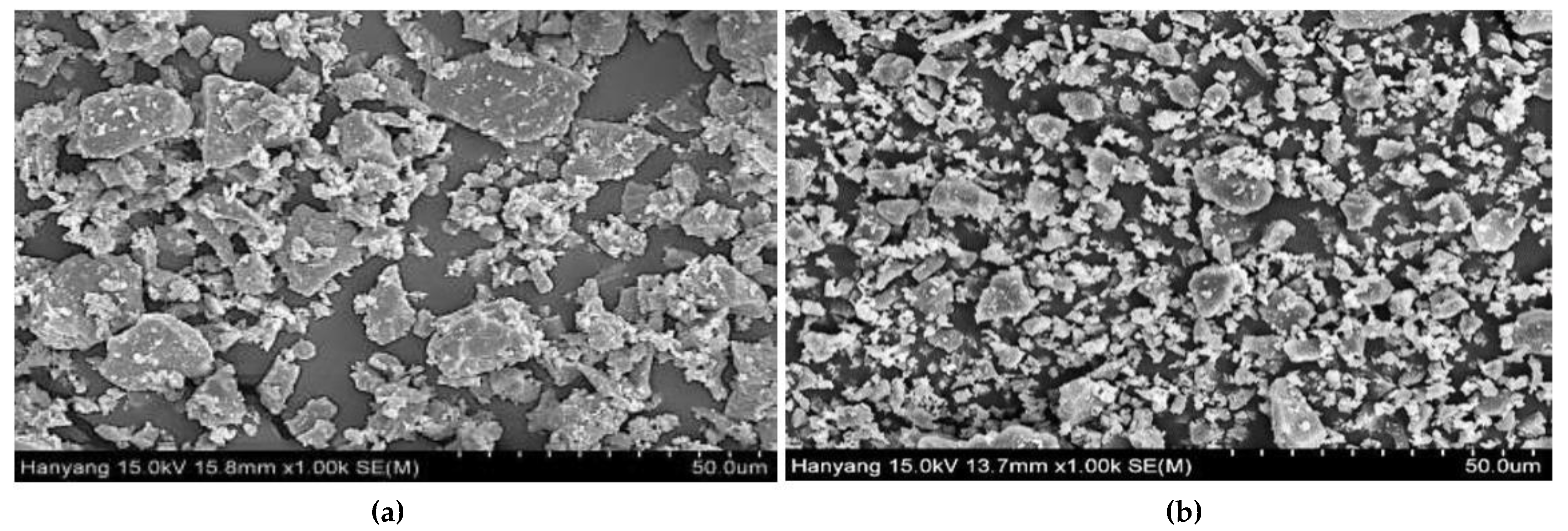

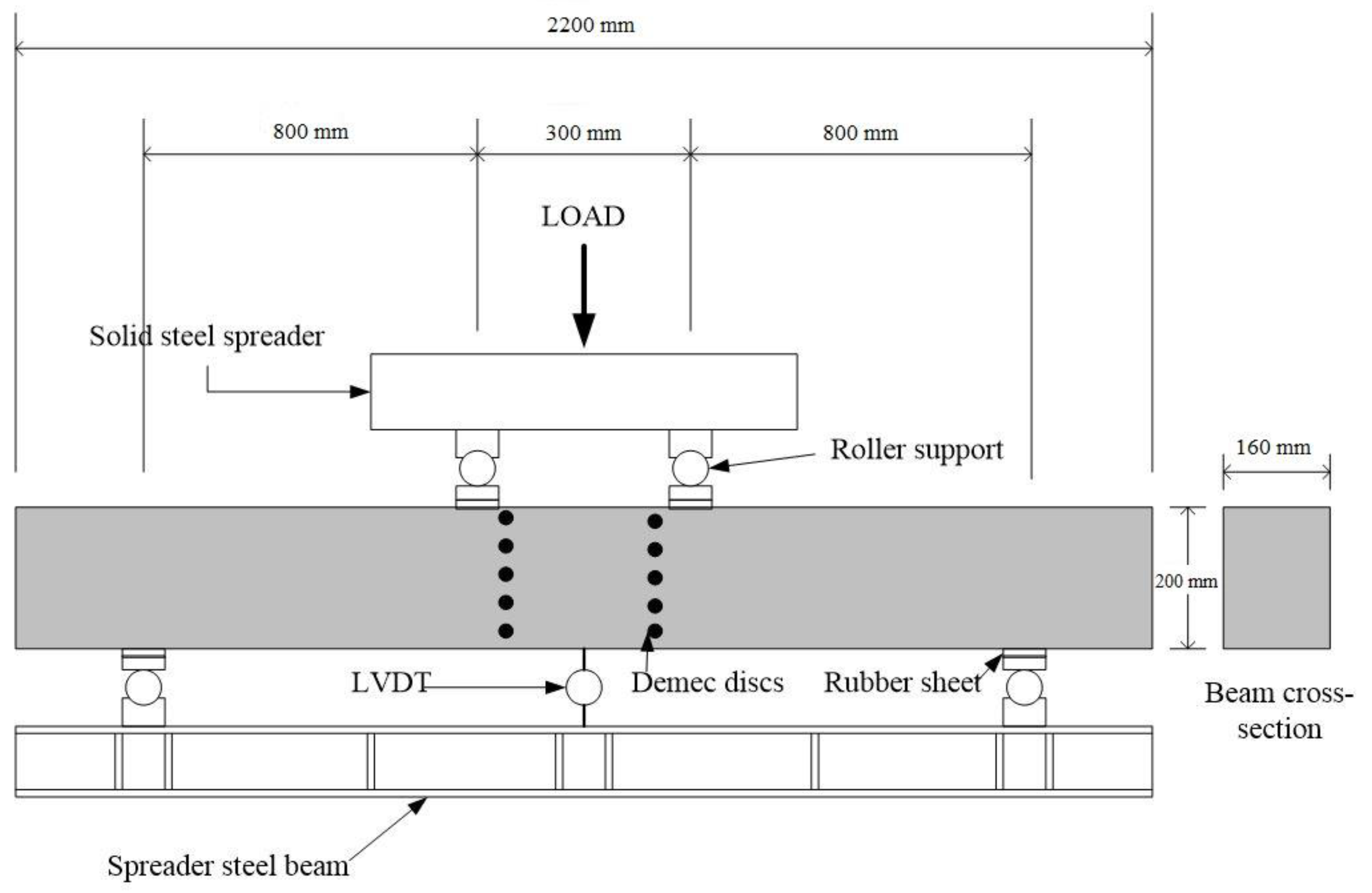

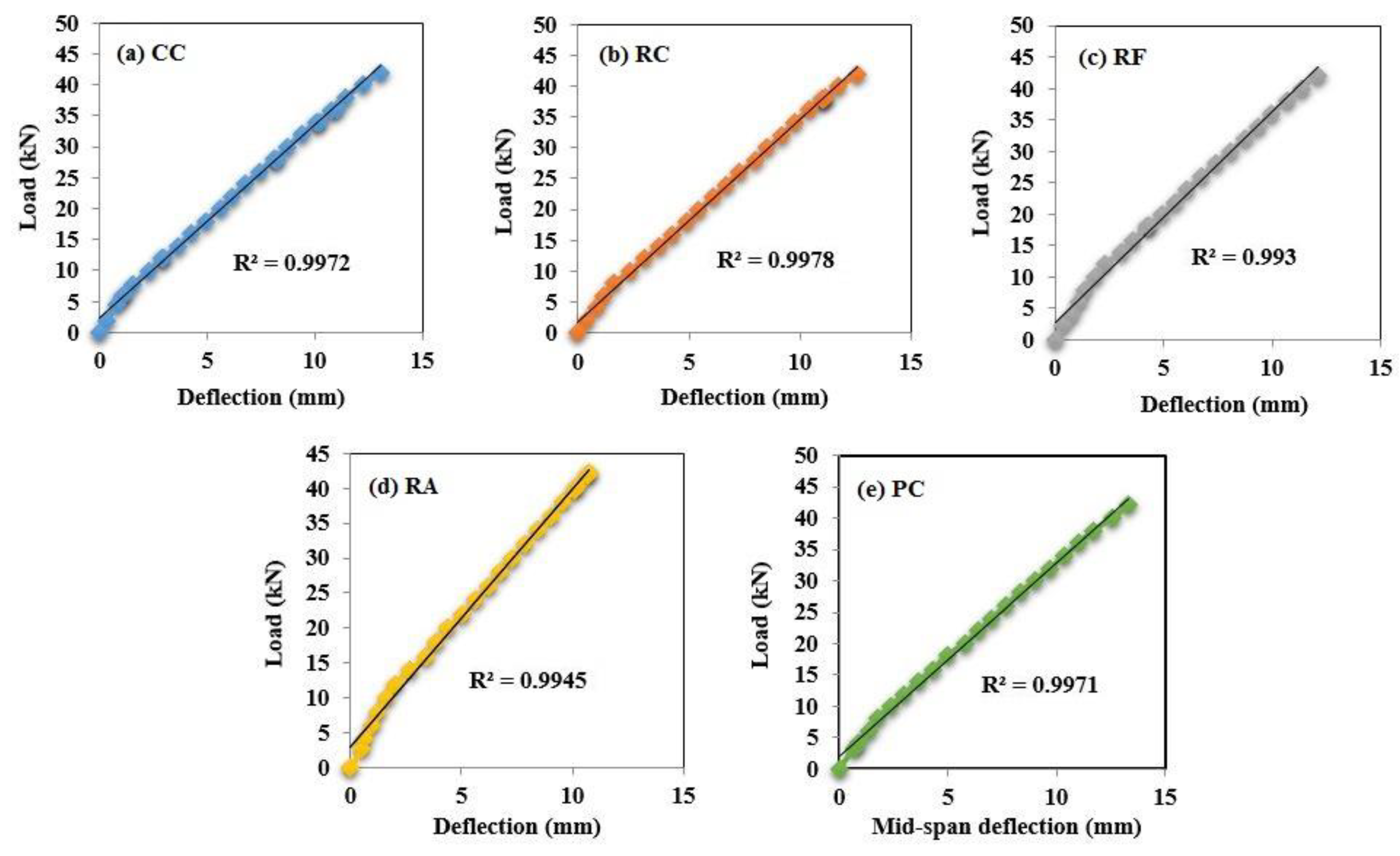


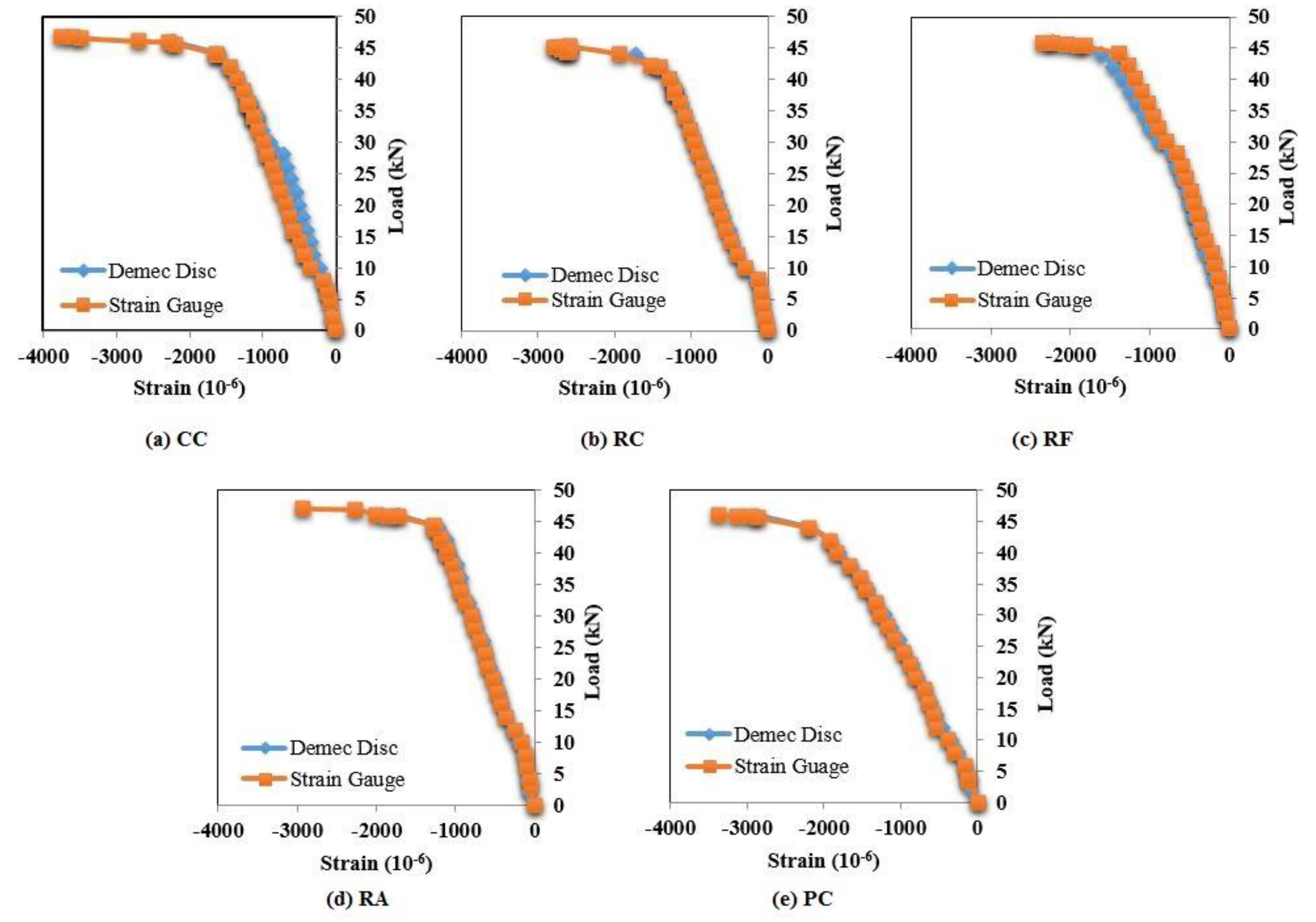
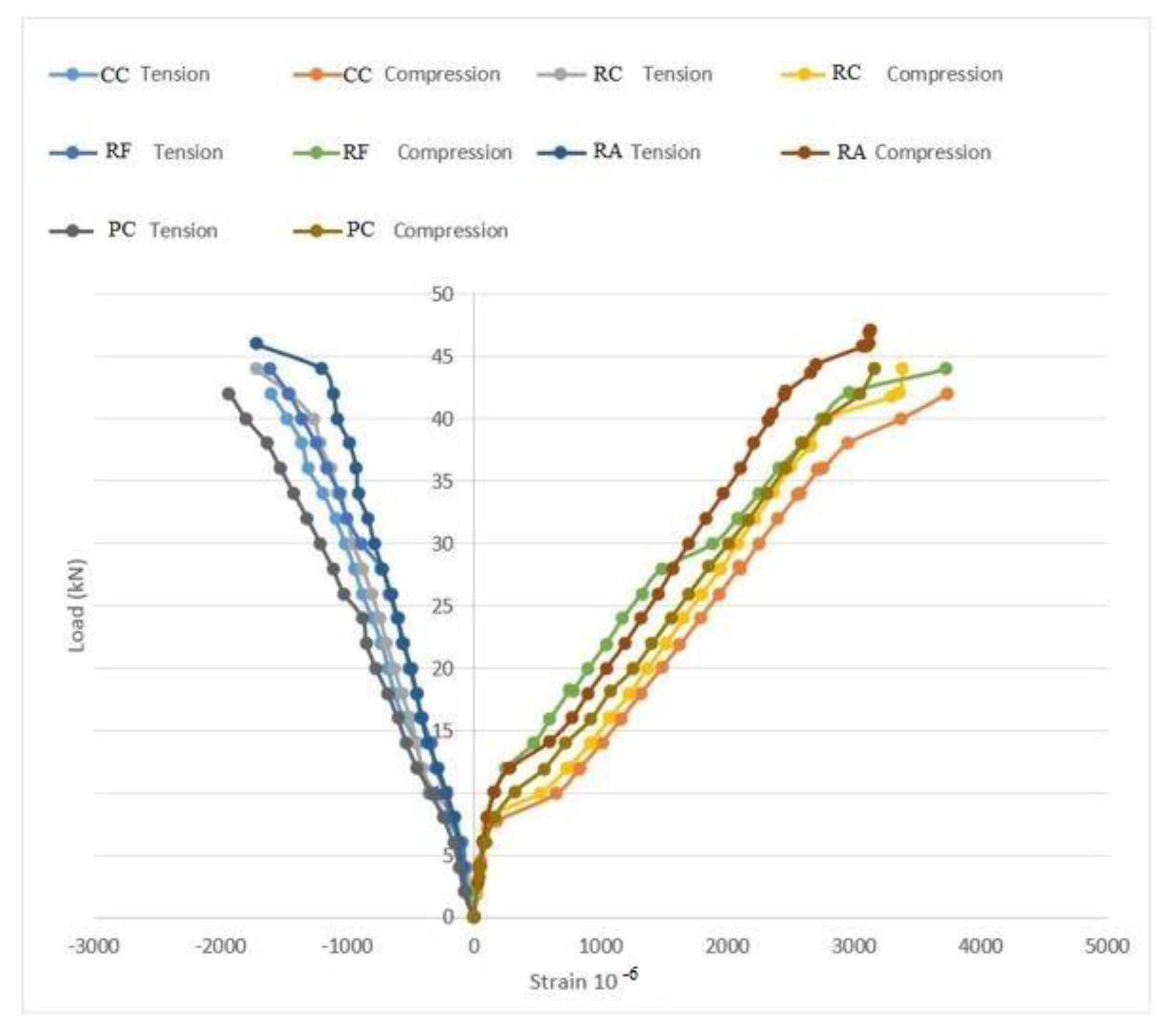
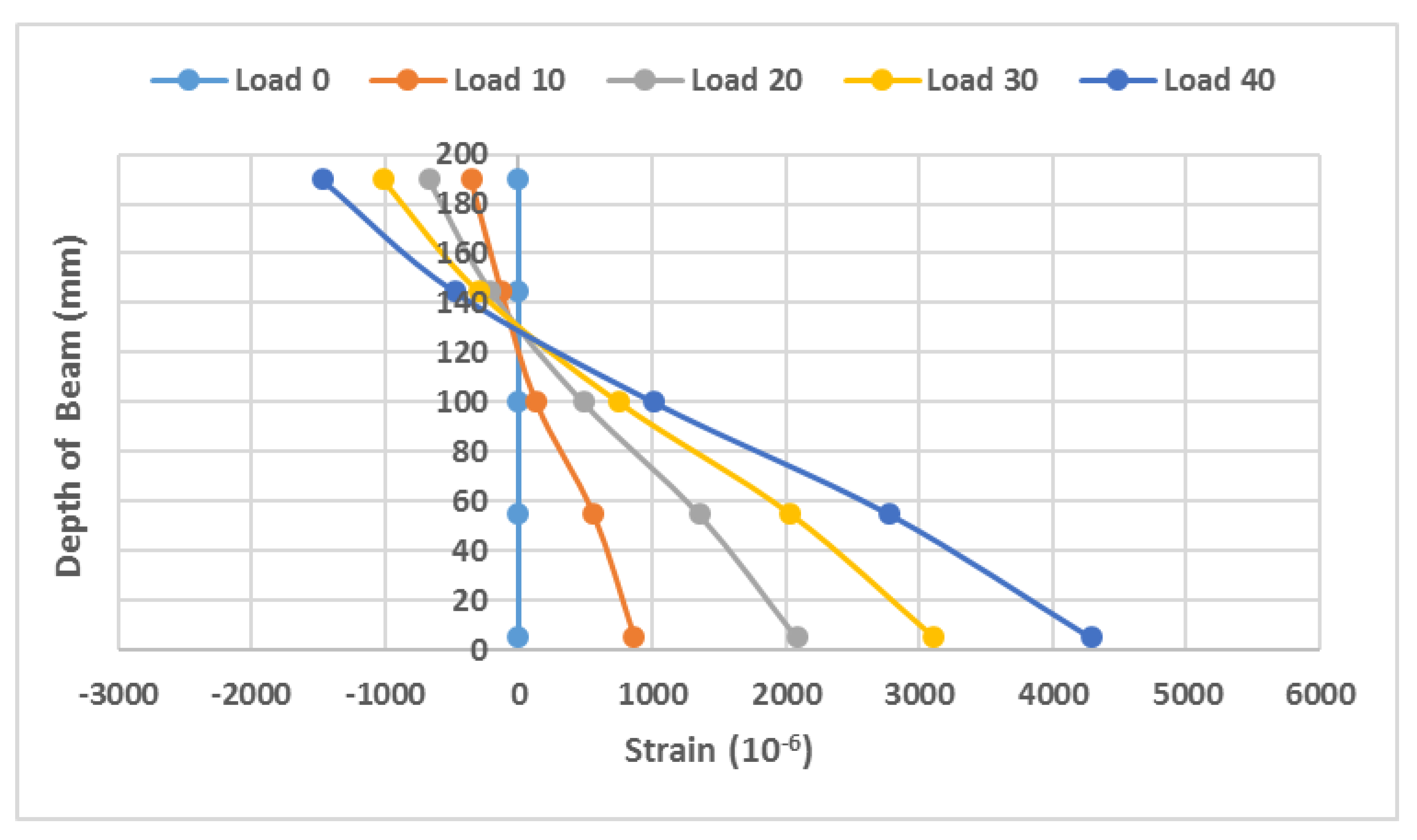
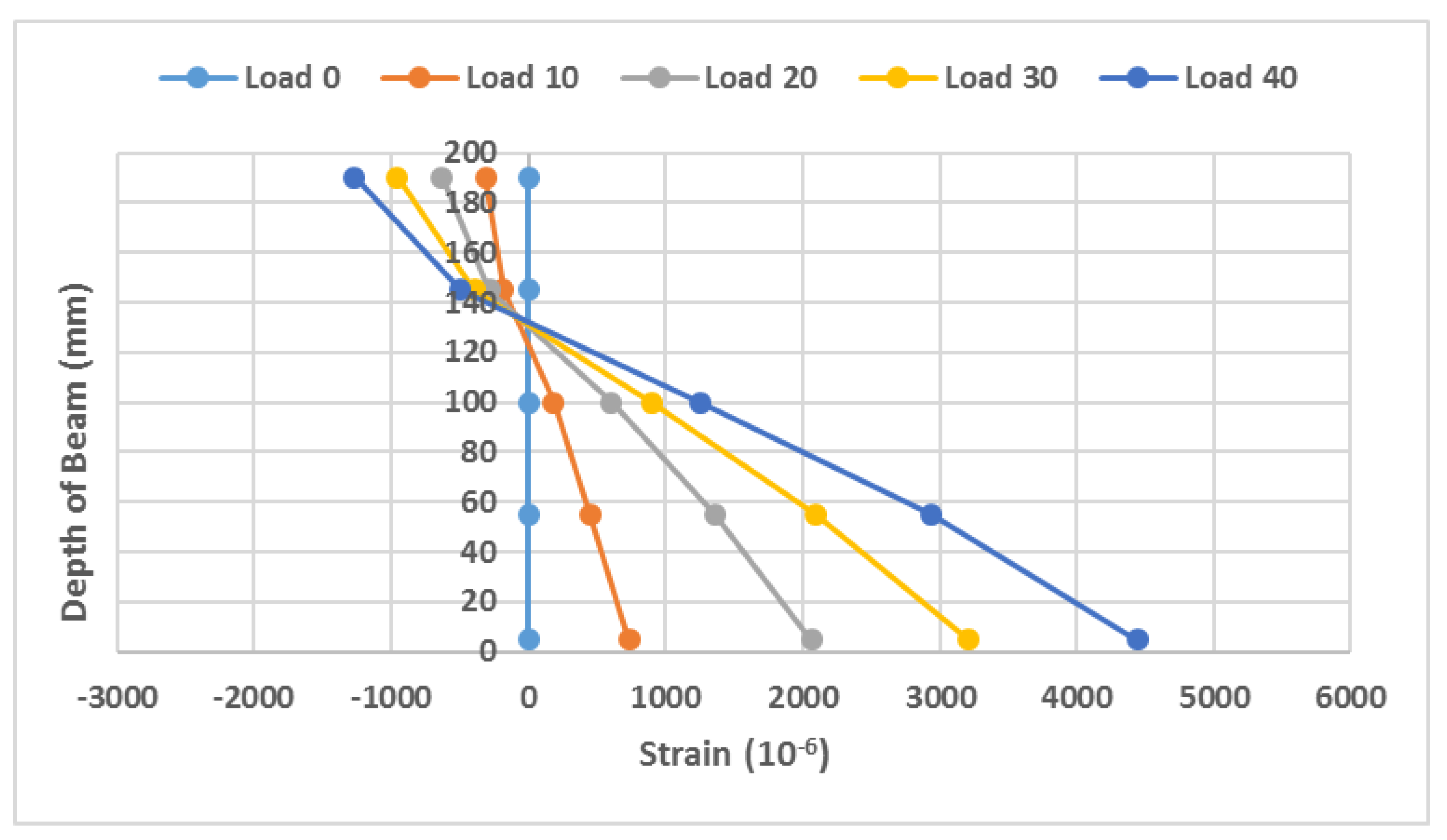
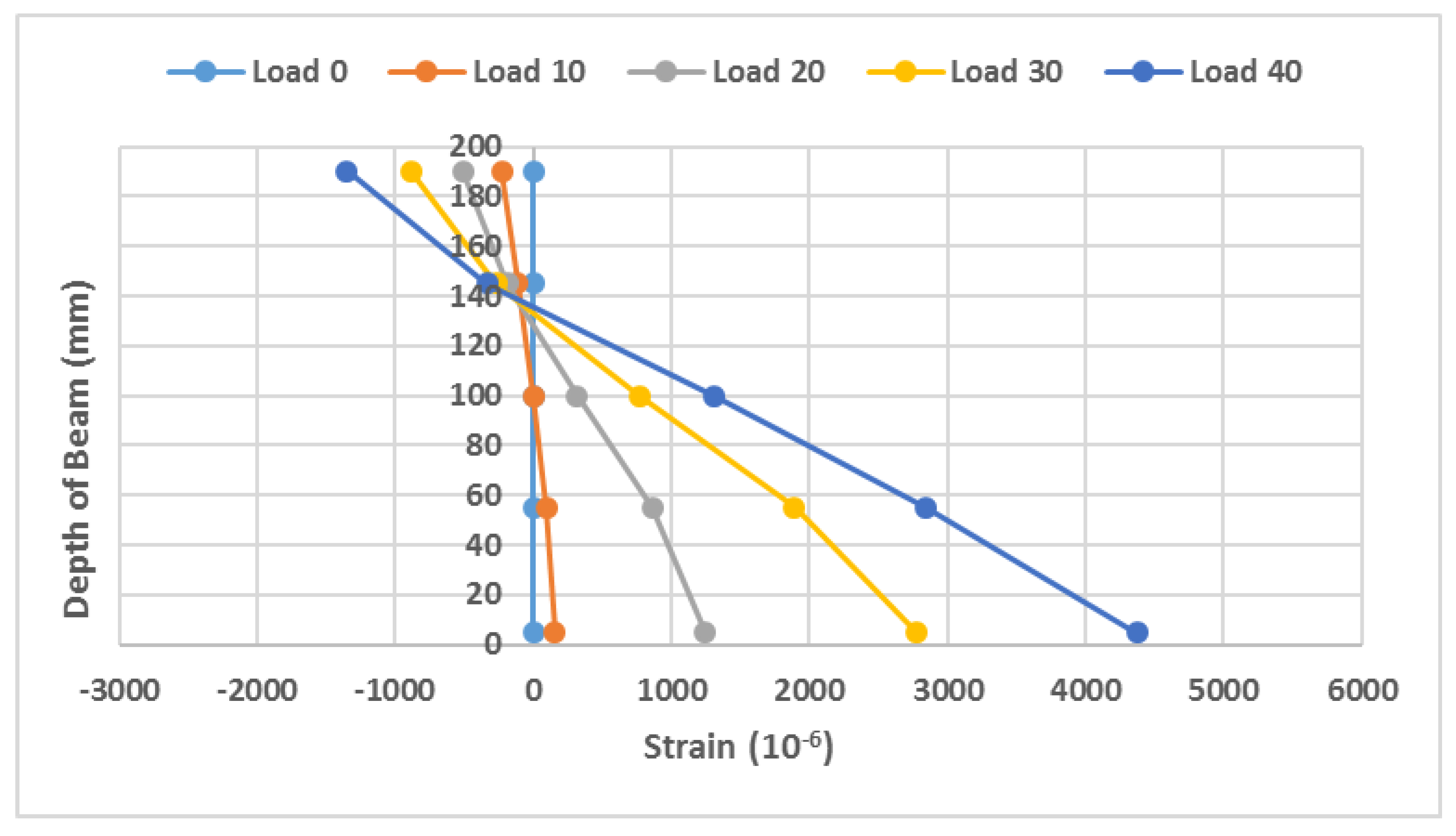
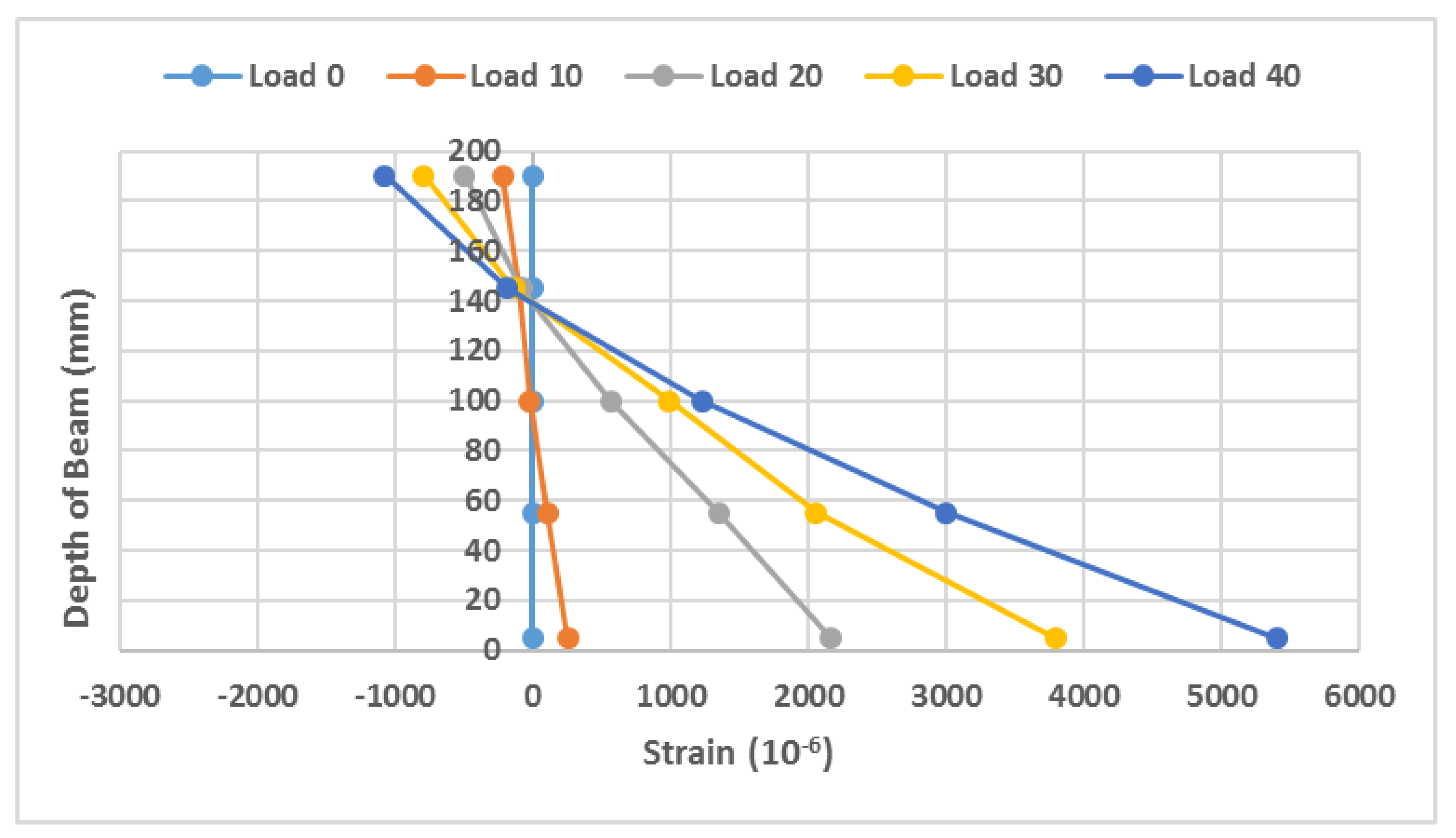
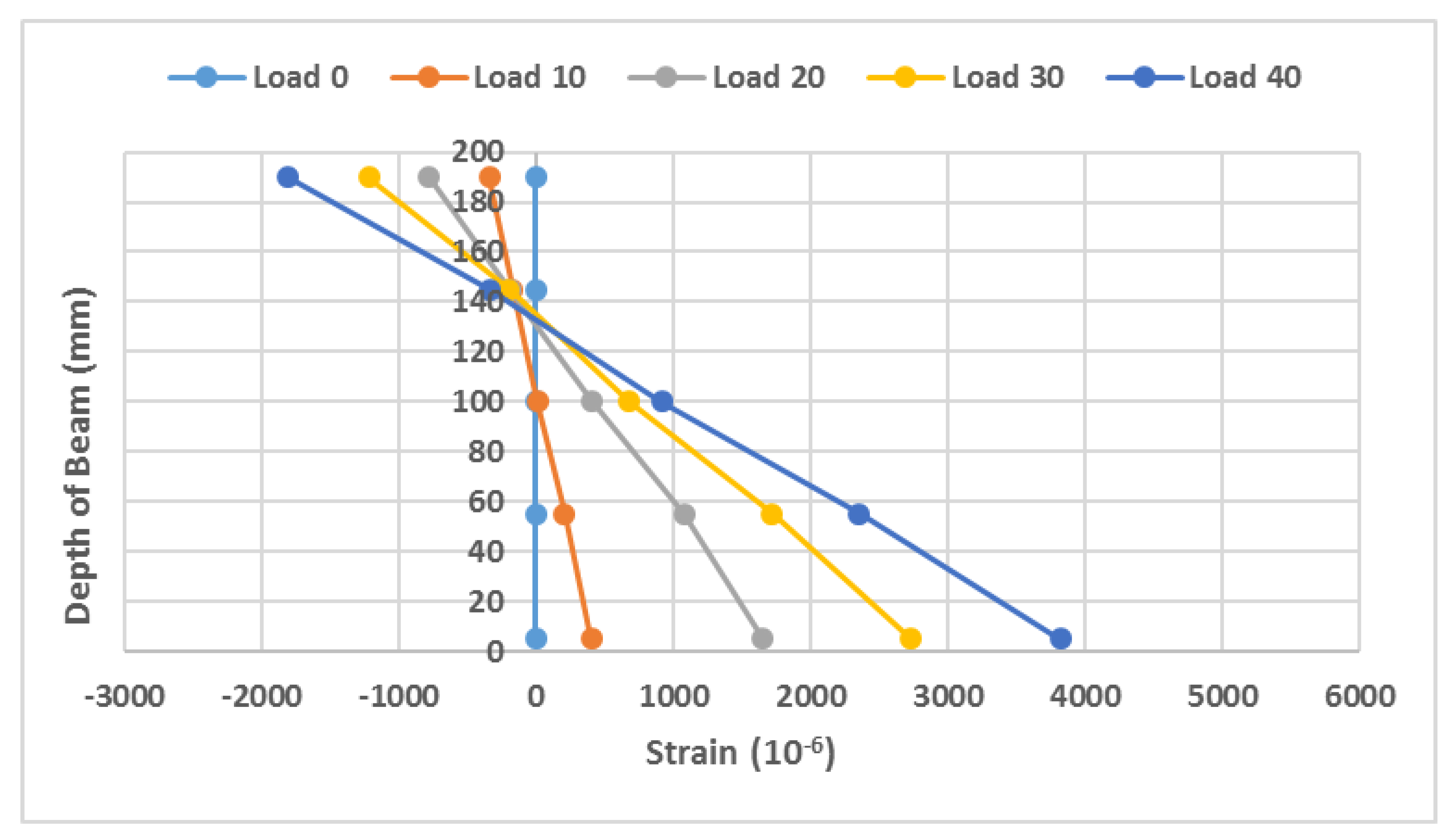
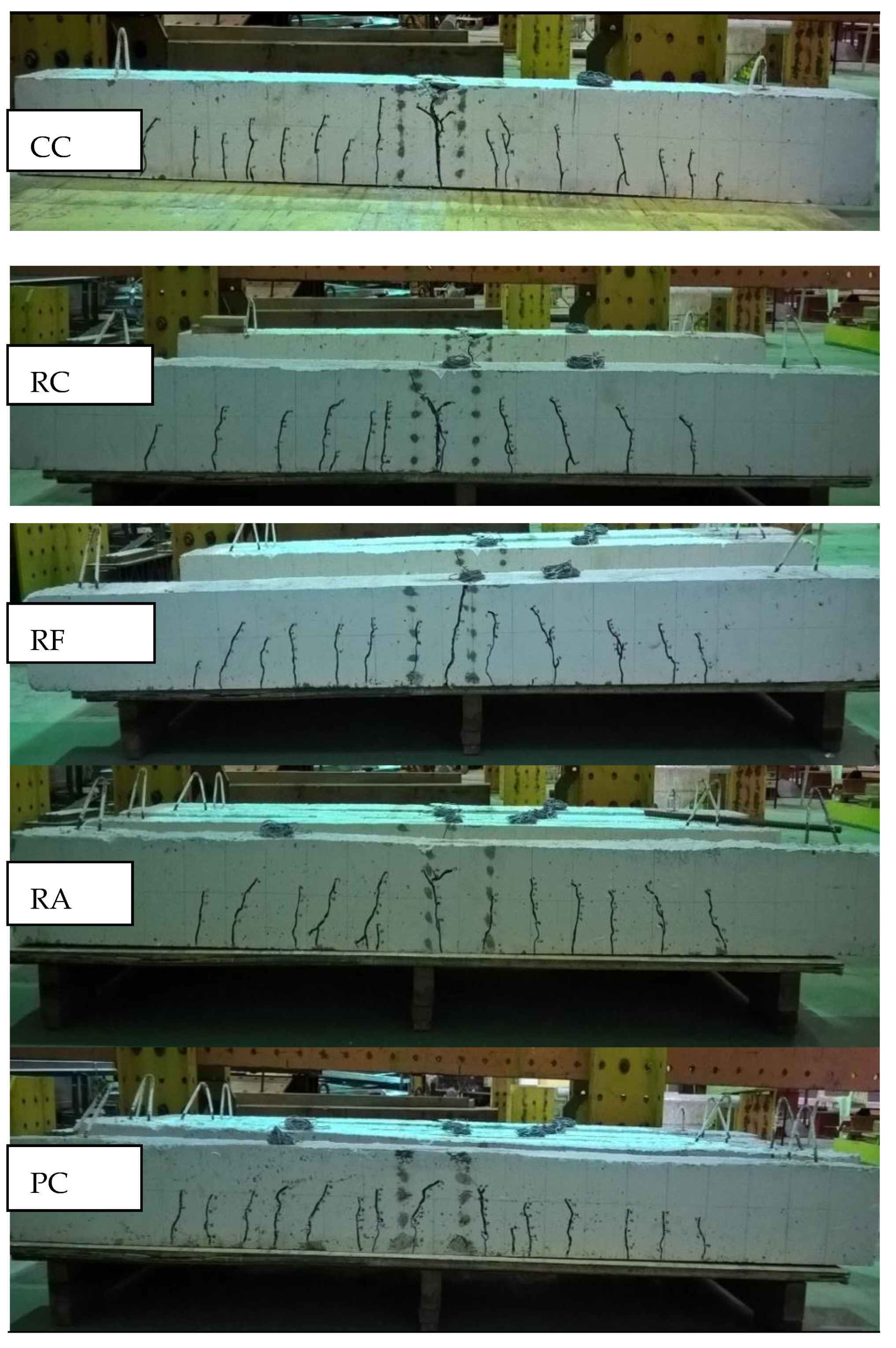
| Composition (%) | SiO2 | Al2O3 | Fe2O3 | CaO | K2O | TiO2 | LOI |
|---|---|---|---|---|---|---|---|
| OPC | 16.40 | 4.24 | 3.53 | 68.30 | 0.22 | 0.09 | 2.40 |
| WCP | 74.10 | 17.80 | 3.57 | 1.11 | 2.69 | 0.46 | 0.10 |
| Label of Specimen | OPC | WCP | River Sand | Fine Ceramic | Crushed Granite | Coarse Ceramic | Water |
|---|---|---|---|---|---|---|---|
| CC | 465 | 0 | 640 | 0 | 1000 | 0 | 250 |
| RC | 465 | 0 | 640 | 0 | 0 | 1000 | 250 |
| RF | 465 | 0 | 0 | 640 | 1000 | 0 | 250 |
| RA | 465 | 0 | 0 | 640 | 0 | 1000 | 250 |
| PC | 280 | 185 | 0 | 640 | 0 | 1000 | 250 |
| Label of Specimen | Tension Reinforcement Bars | The Ratio of Reinforcement Bars (ρt) | Shear Reinforcement Bars | fc’ (N/mm2) |
|---|---|---|---|---|
| CC | 2 ⱷ 12 | 0.75% | ⱷ 10 @ 100mm | 52 |
| RC | 2 ⱷ 12 | 0.75% | ⱷ 10 @ 100mm | 43.5 |
| RF | 2 ⱷ 12 | 0.75% | ⱷ 10 @ 100mm | 45.6 |
| RA | 2 ⱷ 12 | 0.75% | ⱷ 10 @ 100mm | 51.7 |
| PC | 2 ⱷ 12 | 0.75% | ⱷ 10 @ 100mm | 41.5 |
| Label of Specimen | A load of First Crack (kN) | Deflection at First Crack(mm) | Ultimate Load (kN) | Deflection at Ultimate Load (kN) | Total Number of Crack | Correlation of First Crack Load to Ultimate Load (%) |
|---|---|---|---|---|---|---|
| CC | 14 | 3.67 | 47.6 | 28.46 | 16 | 29 |
| RC | 10 | 2.33 | 44.9 | 21.67 | 12 | 22 |
| RF | 14 | 3.04 | 45.8 | 20.55 | 13 | 31 |
| RA | 14 | 2.69 | 47.1 | 17.52 | 12 | 30 |
| PC | 12 | 3.01 | 45.7 | 17.12 | 15 | 26 |
| Label of Specimen | At First Crack Load | At Ultimate Load | ||
|---|---|---|---|---|
| Load (kN) | Deflection (mm) | Load (kN) | Deflection (mm) | |
| CC | 14 | 3.67 | 47.6 | 28.46 |
| RC | 10 | 2.97 | 44.9 | 21.67 |
| RF | 14 | 3.04 | 45.8 | 20.55 |
| RA | 14 | 2.69 | 47.1 | 17.52 |
| PC | 12 | 3.01 | 45.7 | 16.12 |
| Specimen | Experimental Ultimate Load (kN) | Ultimate Moment Capacity (kN.m) | Theoretical Moment Capacity (kN.m) | Compared to CC (%) |
|---|---|---|---|---|
| CC | 47.6 | 21.4 | 13 | 100 |
| RC | 44.9 | 20.2 | 13 | 94 |
| RF | 45.8 | 20.6 | 13 | 96 |
| RA | 47.1 | 21.2 | 13 | 99 |
| PC | 45.7 | 20.6 | 13 | 96 |
| Specimen | First Crack Load (kN) | Reinforcement Bar Strain (10−6) | 50% of Ultimate Load (kN) | Reinforcement Bar Strain (10−6) | Ultimate Load (kN) | Reinforcement Bar Strain (10−6) |
|---|---|---|---|---|---|---|
| CC | 14 | 1117 | 23.80 | 1932 | 47.6 | 5551 |
| RC | 10 | 528 | 22.45 | 1510 | 44.9 | 7727 |
| RF | 14 | 478 | 22.90 | 1176 | 45.8 | 7524 |
| RA | 14 | 594 | 23.55 | 1323 | 47.1 | 5316 |
| PC | 12 | 552 | 22.35 | 1409 | 45.7 | 5320 |
| Specimen | Load at First Crack (kN) | The Depth of Neutral Axis at First Crack Load (mm) | Ultimate Load (kN) | The Depth of Neutral Axis at Ultimate Load (mm) |
|---|---|---|---|---|
| CC | 14 | 74 | 47.6 | 61 |
| RC | 10 | 71 | 44.9 | 48 |
| RF | 14 | 73 | 45.8 | 46 |
| RA | 14 | 61 | 47.1 | 43 |
| PC | 12 | 79 | 45.7 | 61 |
Publisher’s Note: MDPI stays neutral with regard to jurisdictional claims in published maps and institutional affiliations. |
© 2022 by the authors. Licensee MDPI, Basel, Switzerland. This article is an open access article distributed under the terms and conditions of the Creative Commons Attribution (CC BY) license (https://creativecommons.org/licenses/by/4.0/).
Share and Cite
Samadi, M.; Baghban, M.H.; Kubba, Z.; Faridmehr, I.; Abdul Shukor Lim, N.H.; Benjeddou, O.; Ariffin, N.F.B.; Huseien, G.F. Flexural Behavior of Reinforced Concrete Beams under Instantaneous Loading: Effects of Recycled Ceramic as Cement and Aggregates Replacement. Buildings 2022, 12, 439. https://doi.org/10.3390/buildings12040439
Samadi M, Baghban MH, Kubba Z, Faridmehr I, Abdul Shukor Lim NH, Benjeddou O, Ariffin NFB, Huseien GF. Flexural Behavior of Reinforced Concrete Beams under Instantaneous Loading: Effects of Recycled Ceramic as Cement and Aggregates Replacement. Buildings. 2022; 12(4):439. https://doi.org/10.3390/buildings12040439
Chicago/Turabian StyleSamadi, Mostafa, Mohammad Hajmohammadian Baghban, Ziyad Kubba, Iman Faridmehr, Nor Hasanah Abdul Shukor Lim, Omrane Benjeddou, Nur Farhayu Binti Ariffin, and Ghasan Fahim Huseien. 2022. "Flexural Behavior of Reinforced Concrete Beams under Instantaneous Loading: Effects of Recycled Ceramic as Cement and Aggregates Replacement" Buildings 12, no. 4: 439. https://doi.org/10.3390/buildings12040439








